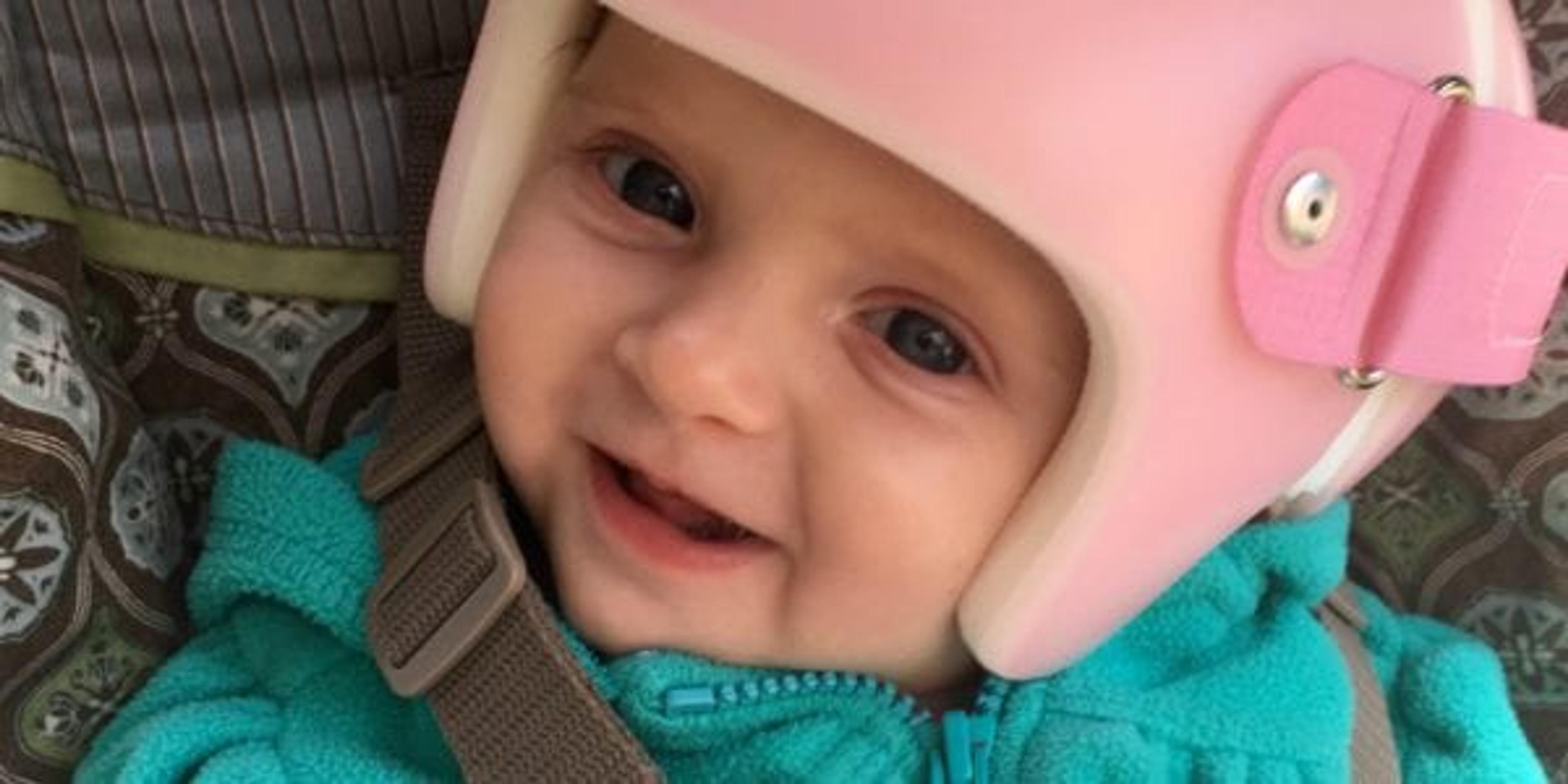Why Do Some Babies Wear Helmets?

Julie Bitely
| 3 min read

When our family doctor mentioned that our youngest daughter’s head shape might be a bit off, I probably looked at him like he had two heads.
She’s obviously perfect, I thought, in my new-mom stupor.
Well, not quite. Upon closer inspection I had to admit that her sweet little head was kind of asymmetrical. She was diagnosed with plagiocephaly, which eventually required her to wear a helmet. Although my husband and I weren’t thrilled at first, it’s made a tremendous difference in the shape of her head in a short time and it really hasn’t been that bad.
Here’s the scoop on all those adorable babies you might have seen out and about rocking their own helmets:
What do the helmets treat? Helmets are used to treat positional plagiocephaly, which results in a baby having a misshapen head shape. Brachycephaly is having a head shape that’s flat in the back, which helmets can also correct. These conditions can be a result of babies being frequently positioned on their back or favoring one side of their head. Babies can also develop plagiocephaly in their mother’s womb if they’re crowded for space or in the breech position. Babies might also need a helmet to treat craniosynostosis, a condition where the skull bones fuse too quickly, leading to an abnormal head shape as the brain grows. This condition typically also requires surgery before the use of a helmet is involved.
How do they work? Simply put, helmet therapy reshapes a baby’s head. A professional orthotist scans baby’s head to see where growth needs to occur to round out the head shape. The helmet is then molded to allow growth where it is needed. Periodic appointments are needed to gauge progress and make adjustments. Starting at a young age, when growth is rapid, means the helmet won’t have to be worn as long. In fact, the length of time a baby remains in their helmet hinges on how fast their head grows.
Are they worn 24/7? Almost. After an initial adjustment period, babies wear their helmets 23 hours per day. That one-hour break allows for bath time, which is necessary thanks to the sometimes profuse sweating that happens under the helmet. While it’s off, the helmet is cleaned with rubbing alcohol.
Are helmets always necessary? If you notice that your baby has a flat spot or asymmetrically-shaped head, his or her doctor might recommend starting with repositional therapy before being fitted for a helmet. By simply working with your baby to keep them off the flat part of their head by moving them into different positions in their car seat or crib or focusing on more tummy time, the head shape issues might resolve on their own. Physical therapy might also be recommended before turning to helmet therapy.
What happens if they aren’t worn? If plagiocephaly is severe enough to warrant a helmet, it’s probably worth considering. Beyond the aesthetic improvements to the head shape, helmet therapy can help children avoid problems with ear infections, visual defects and an uneven jaw, which could lead to pain or eating problems.
As with any medical concern, it’s important to work with your doctor and other professionals to make the decision that’s best for your child and your family.
Is your baby a member of the helmet club? Share your experience and tips in the comments.
If you liked this post, you might also enjoy:
Photo credit: Julie Bitely





